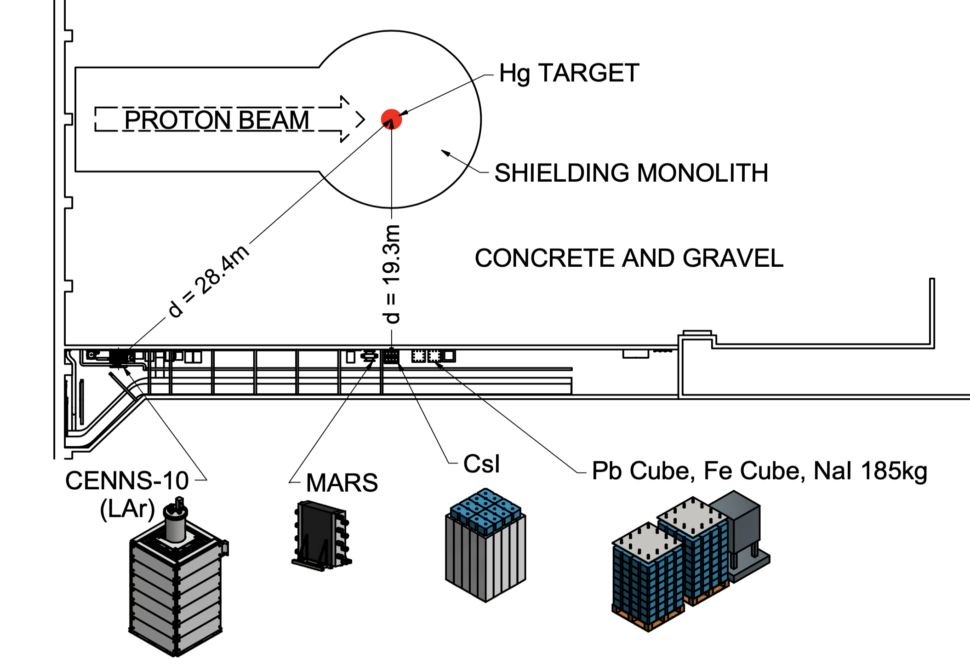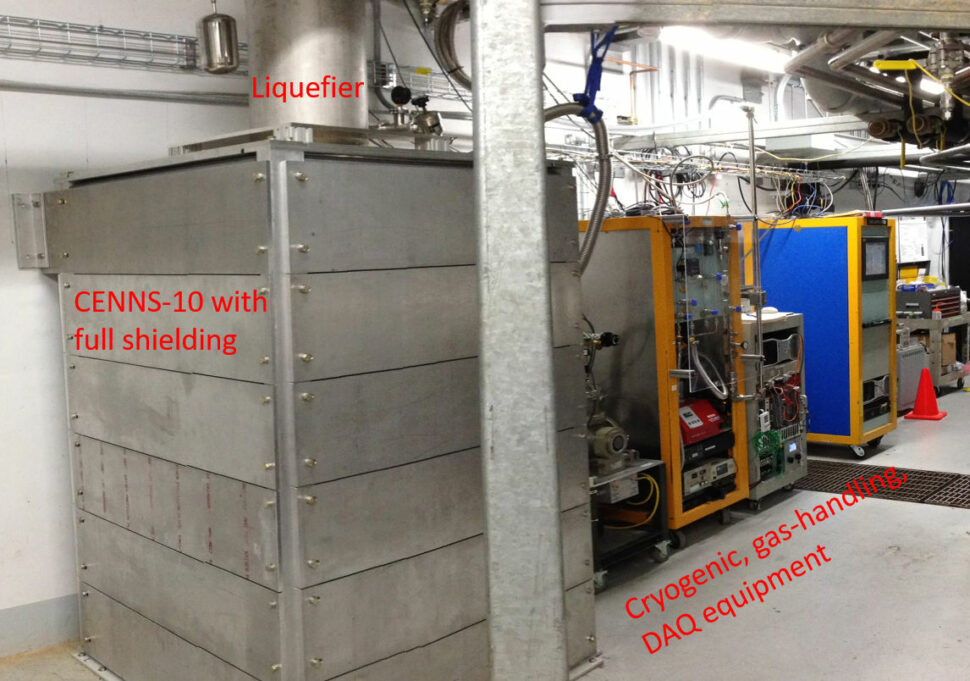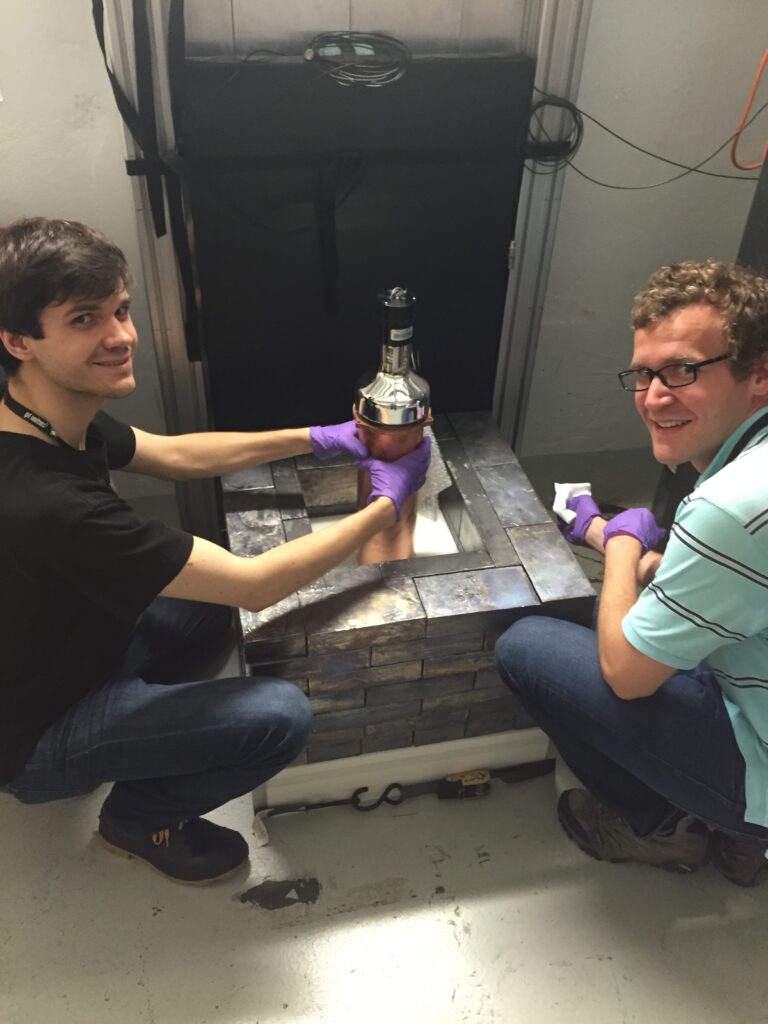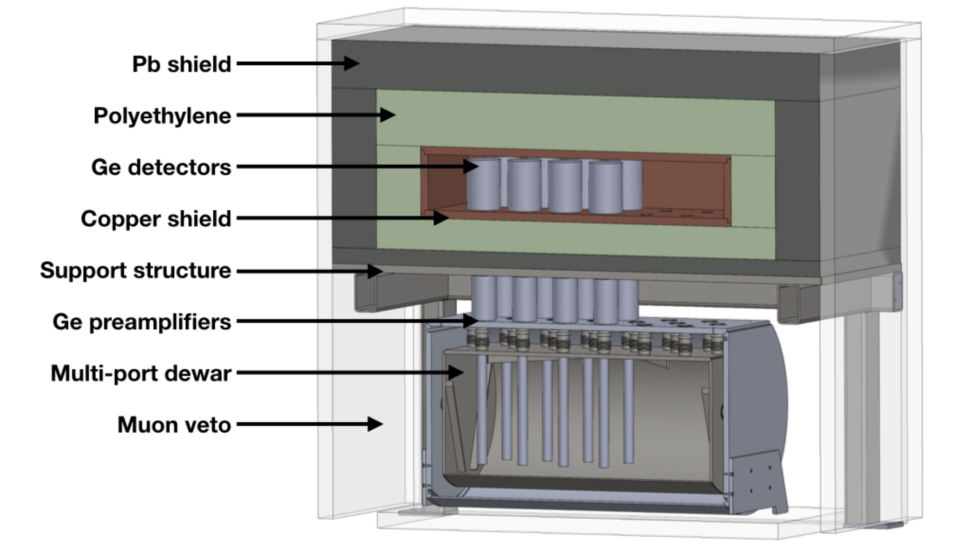The COHERENT Detector Suite
- In the basement of the SNS target hall, there is a hallway, dubbed Neutrino Alley, with a minimum of 20m of engineered backfill between the SNS target and any detector systems in the hall. This shielding is crucial to negate the large neutron flux produced in the SNS target, a significant background for a CEvNS search as these neutrons can mimic the CEvNS signal.
Within Neutrino Alley, the COHERENT experiment has deployed a suite of detector systems seeking to detect the CEvNS process on multiple nuclei and verify the dependence of the CEvNS cross section on the number of neutrons squared.

- Liquid Argon
- COHERENT has deployed the 22kg liquid argon calorimeter CENNS-10. Originally designed and built at Fermi National Accelerator Laboratory, CENNS-10 has been operating at the SNS since October 2016. Following an initial engineering run, CENNS-10 was upgraded over the summer of 2017 to begin taking physics data, resulting in a first observation of CEvNS on argon nuclei early in 2020.

- CsI[Na]
- The CsI[Na] detector was the world’s smallest working neutrino detector at 14.6kg. The CsI[Na] crystal was shielded by low-background materials and instrumented with a super-bialkali PMT. The CsI[Na] detector made the first ever observation of CEvNS in 2017.

- NaI[Tl]
- A 185kg NaI[Tl] detector was installed at the SNS in June 2016. This detector was designed to study the neutrino charged current interaction on 127I and to measure beam-related backgrounds for a CEvNS search with Na. A tonne-scale detector sensitive to CEvNS is set to be commissioned later in 2020, ultimately totaling 6t of NaI crystals.

- Neutrino Cubes
- The neutrino cubes (NUBEs) are designed to measure the neutrino-induced neutron cross sections on a variety of materials. While a background for the CEvNS measurements at the SNS, this interaction is relevant to supernovae dynamics and the the detection mechanism for the HALO supernovae detector. The first NUBE (using lead as a target material) was installed in fall 2015 with a second detector using an iron target mass deployed in winter 2017.

- HPGe
- A 10kg array of p-type point contact Ge detectors is scheduled to be deployed later in 2020. Ge detectors have extraordinary energy resolution allowing sensitive studies of the CEvNS interaction spectral shape. The Ge array will also provide an intermediate-mass nucleus (between Ar and CsI) to test the dependence of the CEvNS cross section on the number of neutrons squared.

